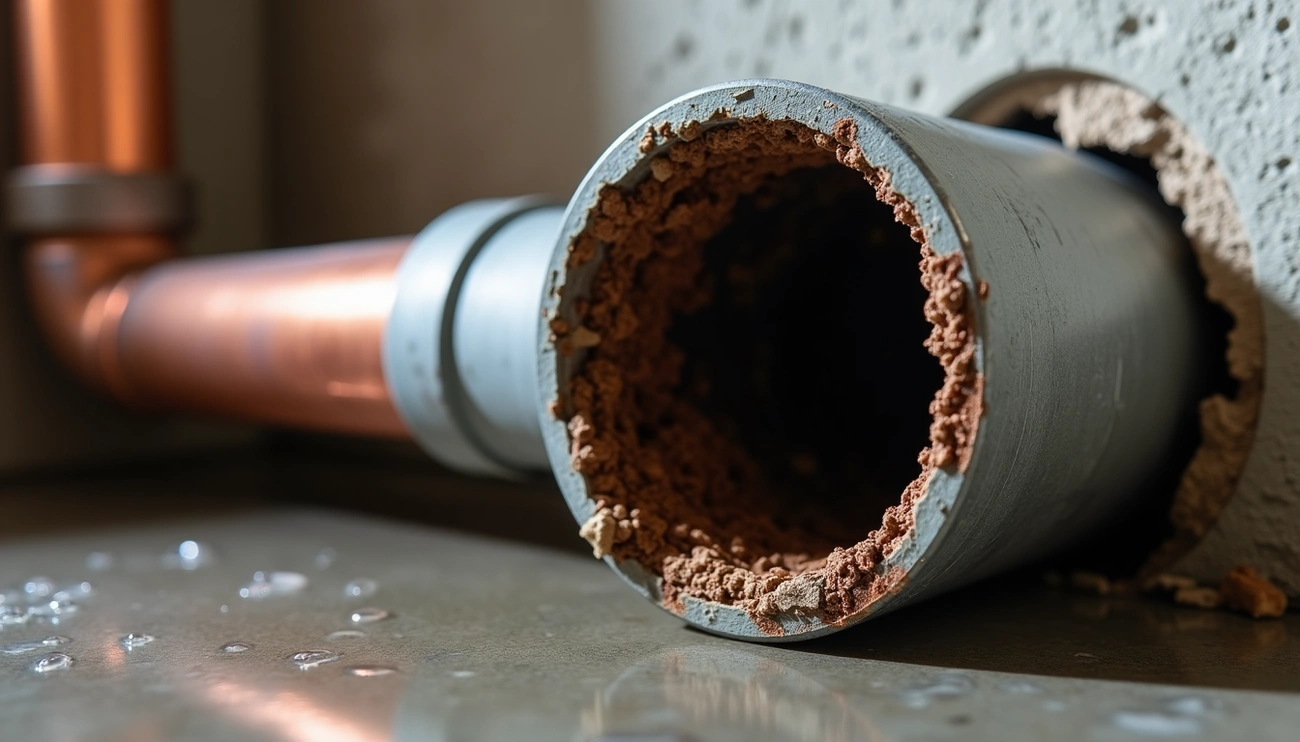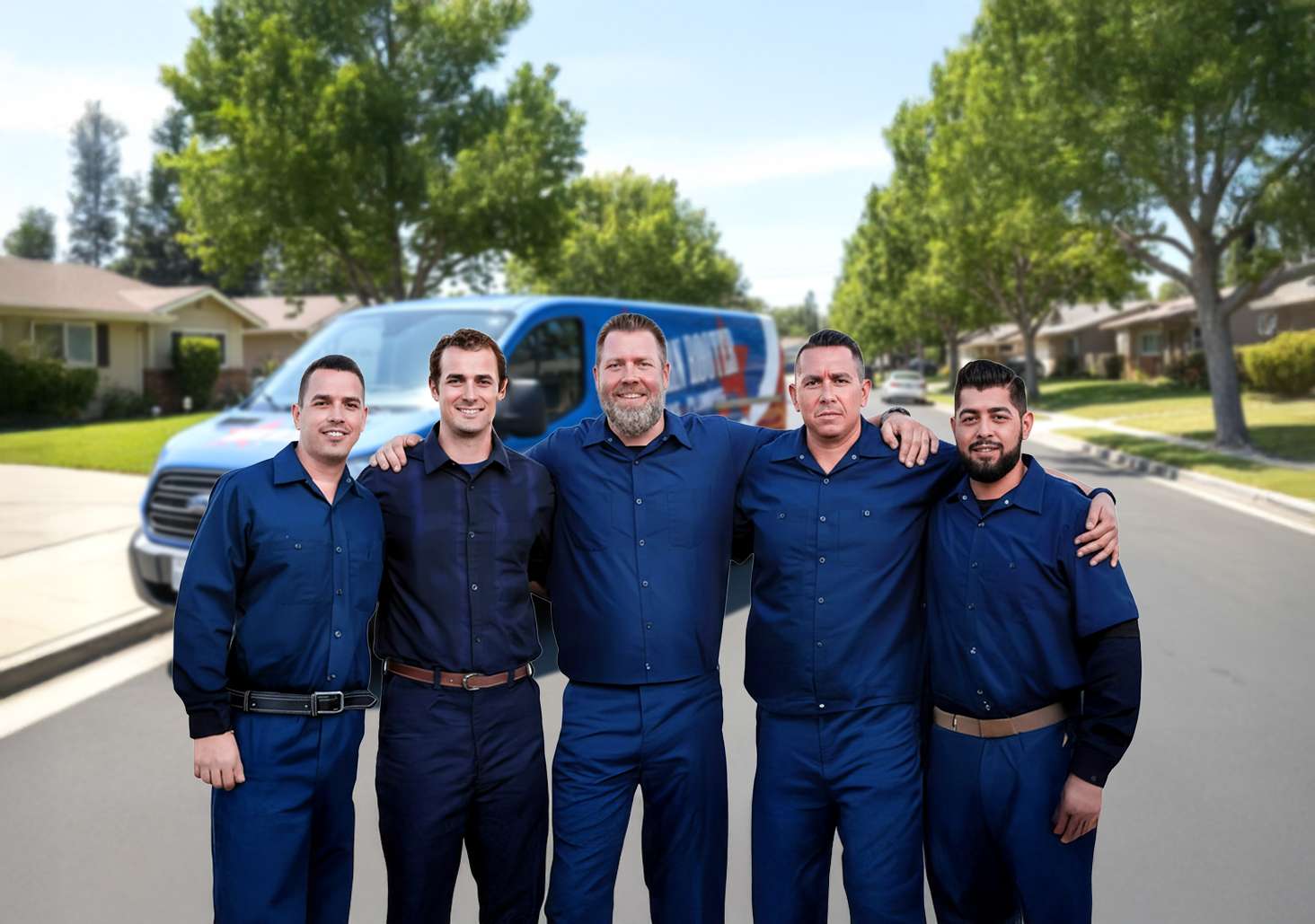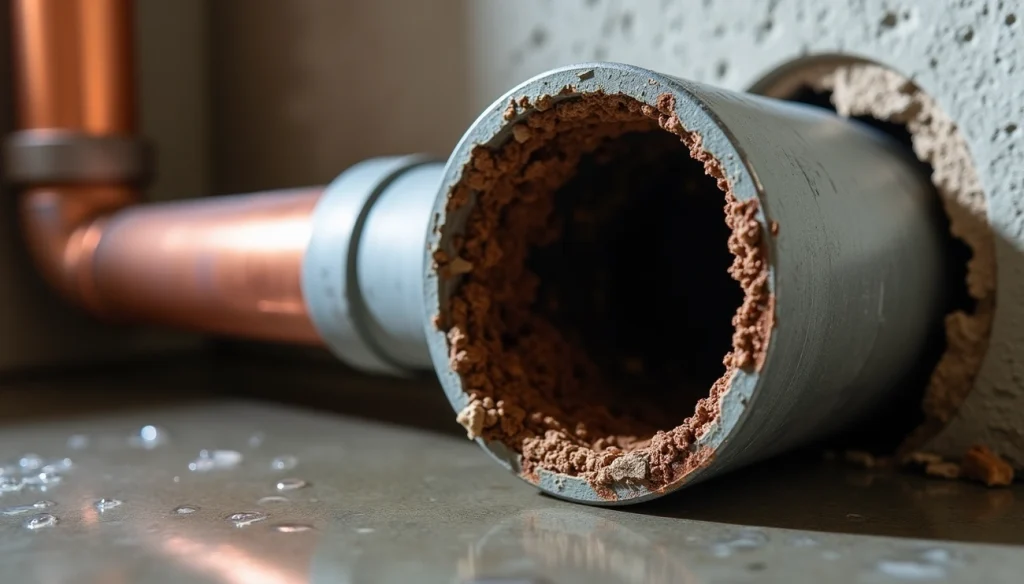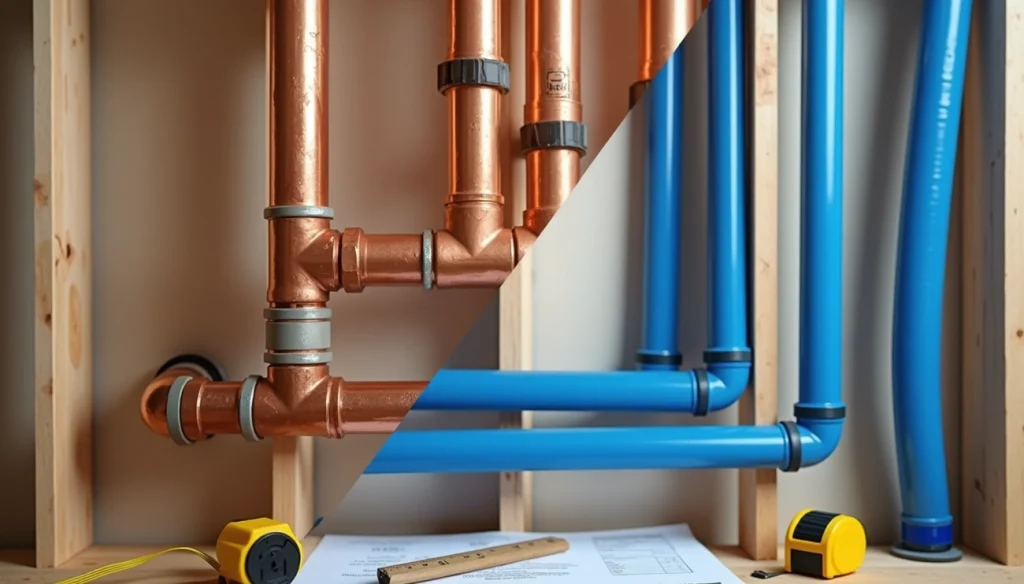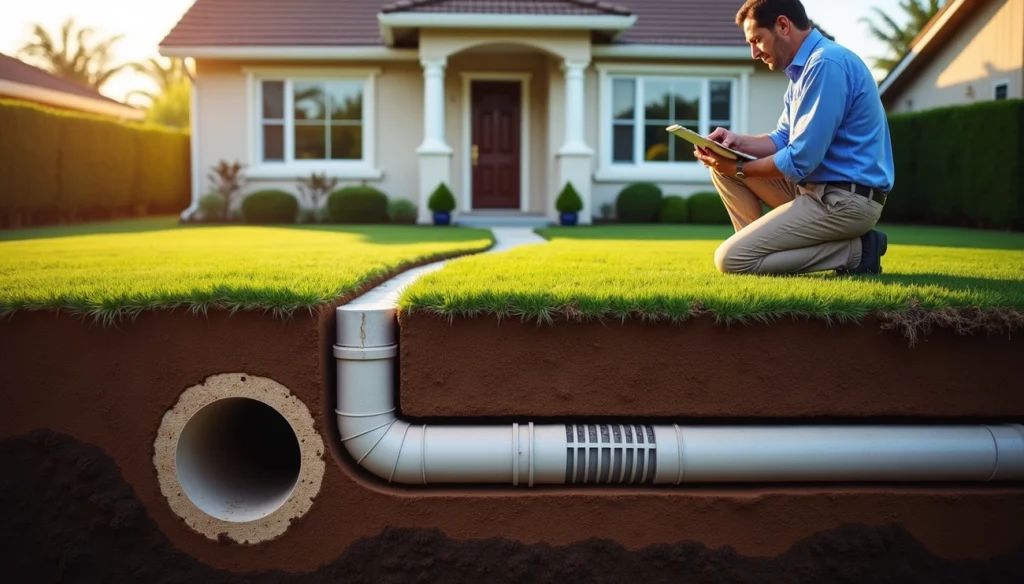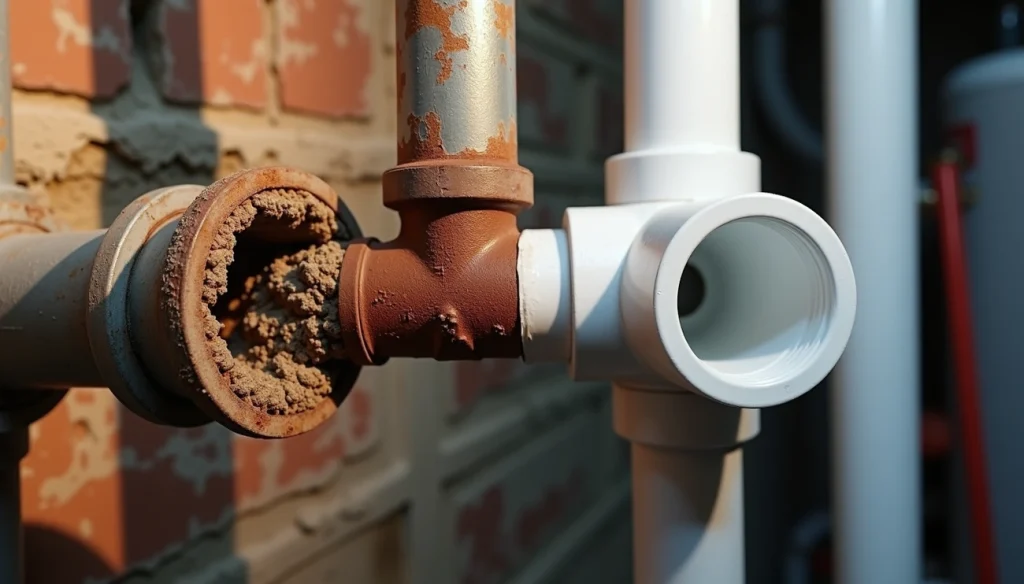Ever wondered about your California home’s galvanized pipe lifespan? These pipes should last 50 to 70 years or more. The reality looks quite different though. Many pipes start corroding before 25 years, and most show the most important signs of wear after 40 years of use.
Your galvanized plumbing needs attention if your home dates back to the 1960s or earlier. This raises concerns because millions of US homes still rely on these old-fashioned pipes. Aging pipes don’t just leak and clog – they can also release accumulated lead into your drinking water. The typical lifespan of galvanized steel pipes ranges from 20 to 50 years. Many homeowners need repairs after just 20 years.
This piece helps you spot warning signs that your galvanized pipes might be failing. You’ll learn what affects their durability in California’s climate and what replacement options make sense. These insights could help you avoid unexpected plumbing emergencies and water damage that can get pricey, especially when you have discolored water or ongoing pressure problems.
What Are Galvanized Pipes and How Long Do They Last?
Steel pipes with a protective zinc coating make up galvanized pipes that help prevent rust and corrosion. These pipes became the standard plumbing solution for homes in California and across the country throughout the 20th century.
History of galvanized plumbing in California homes
People started using galvanized plumbing in the late 19th century as a safer option than lead pipes. Galvanized water supply piping became the most common material for home water supply between World War II and 1960. Most California homes built before 1970 used this type of plumbing.
Builders loved galvanized steel plumbing before the 1960s because it was affordable and seemed durable. The zinc coating looked like a great solution to stop corrosion and rust. Copper piping started taking over by the end of the 1960s as the material of choice.
How long does galvanized plumbing last in real conditions?
Manufacturers thought galvanized pipes would last 50-70 years or more, but reality proved them wrong. These pipes start corroding in less than 25 years, and most show serious damage after 40 years of use. They usually work well for about 40-50 years.
Your galvanized pipes’ lifespan depends on several things:
- Your area’s water quality and pH level
- Hot vs. cold water lines (hot water damages faster)
- Where pipes are located (especially under damp slab foundations)
- How well they’re installed and their thickness
- The zinc coating’s quality
Why galvanized pipes are no longer used in new construction
Modern construction has moved away from galvanized pipes. The protective zinc coating wears away over time and leads to internal corrosion and various problems. Old pipes collect rust and mineral deposits inside them, which blocks water flow and reduces pressure.
These systems installed before the 1960s often connected to lead service lines. As they corrode, they might release lead. This health risk, plus issues like discolored water, weird taste, and frequent leaks, has pushed the industry toward better materials like copper, PEX, and PVC.
California homeowners with pre-1970 homes should check their galvanized plumbing system’s age and condition to avoid surprise failures and protect their property.
Early Warning Signs Your Galvanized Pipes Are Failing
You can save yourself from unexpected plumbing emergencies and water damage that gets pricey by spotting warning signs of failing galvanized pipes. These pipes show several telltale symptoms that deserve attention as they deteriorate.
Low water pressure in multiple fixtures
Declining water pressure throughout your home stands out as one of the earliest signs of galvanized pipe failure. Corrosion and rust build up on pipe walls as they age, which narrows the path for water flow. A system-wide problem rather than an isolated issue becomes apparent when multiple fixtures show reduced pressure.
Water distribution often becomes uneven—some faucets work perfectly while others produce just a trickle. This happens because corrosion accumulates unevenly throughout the plumbing system. The hot water fixtures usually show problems first since higher temperatures speed up the corrosion process.
Rust-colored or discolored water
Your galvanized pipes likely shed their internal corrosion if clear water suddenly appears brown, yellow, or rust-colored. This discoloration becomes most noticeable in faucets that haven’t been used recently, since standing water accumulates rust particles.
Rust from pipe walls breaks loose when you turn on taps, which causes visible contamination. Brown stains might appear on porcelain sinks, bathtubs, or laundry—a clear sign of compromised water quality.
Frequent leaks or pipe bursts
Leaks and failures become common as galvanized pipes deteriorate. Pipe joints often show the first signs of leaking—usually behind walls where moisture damage can remain hidden. Signs include water stains on walls or ceilings, peeling paint, and unexplained damp spots.
Plumbers refer to weak areas in pipe walls as “cancer spots” that eventually start leaking. These spots might temporarily seal themselves with additional rust before they fail completely.
Unusual taste or odor in tap water
A metallic taste in your drinking water points directly to pipe corrosion. Pipes near the end of their life make this unpleasant flavor more obvious. Bacteria growth in corroded plumbing sections can also cause musty or strange odors.
Water sitting in pipes overnight worsens the taste issue by allowing metals to seep into your water supply. These taste changes signal declining water quality that needs attention, though they may not pose immediate health risks.
Visible corrosion or flaking on exposed pipes
Your exposed plumbing can reveal direct evidence of failing galvanized pipes. The original silvery-gray color changes to a duller, darker shade. Advanced deterioration shows up as rust spots, flaking metal, or white mineral deposits on pipe exteriors.
The galvanized coating might completely flake off badly damaged pipes, leaving bare steel that rusts rapidly. Professional help becomes necessary right away if you notice lumpy growths or obvious rust around pipe joints.
What Affects the Lifespan of Galvanized Pipes in California
The lifespan of galvanized pipes varies in California properties. You can plan better maintenance by understanding regional factors rather than just responding to emergencies.
Water pH and mineral content in Los Angeles and San Bernardino
Water quality in California plays a key role in galvanized pipe deterioration. Hard water’s high mineral content creates scale buildup inside pipes. This restricts water flow and increases pressure. Water with pH below 7 speeds up zinc coating degradation and leads to faster corrosion. Water with pH above 8 can cause similar damage. San Bernardino and Los Angeles counties have unique water chemistry profiles that affect corrosion rates differently.
Hot vs. cold water line corrosion rates
Temperature is a vital factor in pipe longevity. Hot water pipes deteriorate twice as fast as cold water lines. Corrosion rates peak at temperatures near 70°C. You can reduce deterioration by keeping water temperatures below 55°C. Systems with low consumption compared to their designed capacity see faster iron sediment buildup in hot water pipes.
Pipe location: slab foundations and damp areas
Concrete slabs pose higher risks to pipes installed beneath them. External zinc coating breaks down faster when moisture gets trapped around buried pipes. Leaks under slabs often remain hidden until they cause major damage.
Installation quality and pipe thickness
Initial installation quality determines a pipe’s lifespan. Weak points develop in pipes that were bent, kinked, or damaged during installation. Thicker, properly installed pipes last longer—with lifespans ranging from 40 to 100 years.
When and How to Replace Galvanized Pipes
You need to know if your home has galvanized pipes before you can tackle any potential issues. Here’s what you should do.
How to confirm if your home has galvanized plumbing
Start by checking your home’s age. Builders commonly used galvanized pipes in homes built between the 1930s and 1980s. You can spot these pipes in your basement or utility areas. Take a screwdriver and scratch the pipe surface – galvanized pipes show a silvery-gray color underneath. A simple magnet test helps too – the magnet will stick to galvanized steel. You might want to call a professional plumber for a thorough inspection.
Galvanized pipe replacement cost in California
Replacing your home’s galvanized pipes needs a decent budget. California homeowners usually pay between $4,000 and $15,000 for whole-house repiping. Your final cost depends on:
- Home size and number of fixtures
- How easy it is to reach existing pipes
- The material you choose
- Labor and permit costs
A typical 1,200 sq. ft. home with two bathrooms costs between $6,000 and $10,000.
Choosing between PEX, copper, or PVC
Let’s look at what each material offers:
PEX (Cross-linked Polyethylene): This affordable option ($1.50-$4.00 per linear foot) bends easily for installation and resists corrosion and scale buildup. It handles hot and cold well but can break down with UV exposure or high chlorine levels.
Copper: This material lasts the longest ($3.00-$8.00 per foot) and won’t corrode, but it costs more than other options.
PVC/CPVC: These pipes are budget-friendly ($0.75-$2.00 per foot) and work best for cold water and drainage.
What to expect during a whole-home repipe
A typical repipe follows these steps: inspection, picking materials, prepping work areas, turning off water, removing old pipes, installing new ones, testing, and fixing walls. Your contractor will protect your floors and walls with covers and plastic sheets. Good contractors handle everything from permits to patching walls.
How long repiping takes and how to prepare
Most whole-house repipes take between 1-3 days. Your water stays off during work hours but comes back on each evening. Here’s how to get ready:
- Clear space under sinks and in closets
- Move valuable or breakable items away from work areas
- Plan around daily water shutoffs
- Book a hotel if needed
Conclusion
Galvanized pipes in California homes don’t last as long as we once thought. You can save thousands in emergency repairs and water damage if you spot the warning signs of failure early. Your plumbing system needs immediate attention when you notice discolored water, frequent leaks, unusual taste, or dropping water pressure.
The longevity of your pipes substantially depends on your home’s specific conditions. Water quality varies across Los Angeles and San Bernardino Counties, which creates different corrosion rates. On top of that, your pipes might last anywhere from 20 to 50 years based on their location and installation quality.
Owners of pre-1970s homes should think about replacing their pipes before a catastrophic failure occurs. A repipe costs between $4,000 and $15,000, but this investment is small compared to potential water damage repairs. While PEX provides an affordable and flexible option, copper remains the most durable choice despite its higher price tag.
Most repipe projects take just 1-3 days with minimal disruption to your daily life. Professional plumbers take care of everything – from permits to restoring access points – which makes the process easier than you might expect.
Aging galvanized pipes need timely attention. Putting off replacement often results in costlier repairs, poor water quality, and possible health risks from lead contamination. Call Western Rooter today for a free estimate and see how easy updating your home’s plumbing can be!


